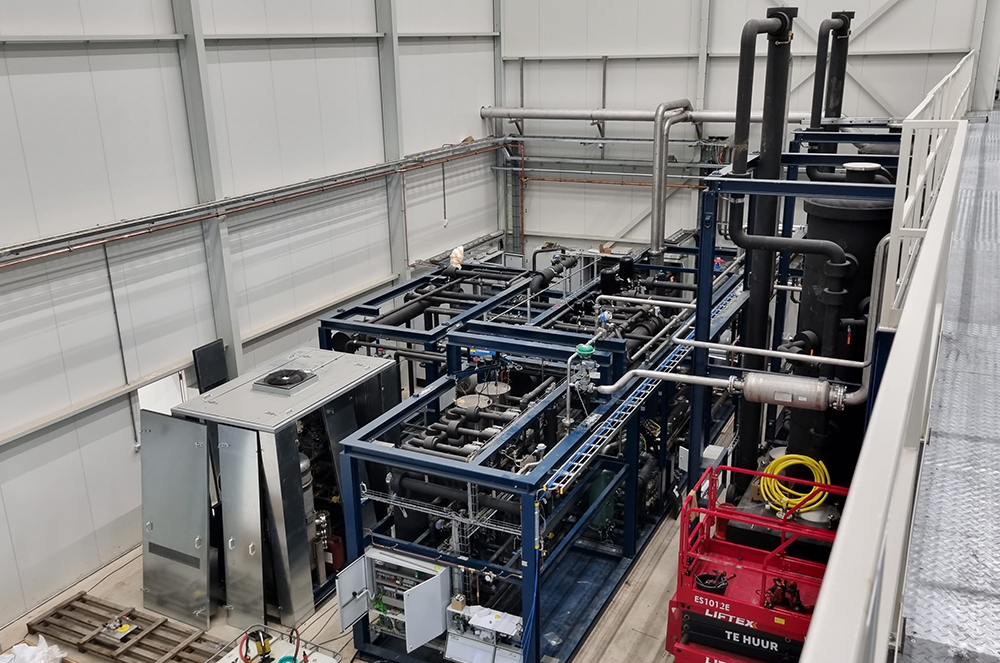
Condensation plants
Condensation plants are used for solvent recovery when the respective volumetric flow is relatively low and the amount of solvents is high.
Condensation plants cool the process gas down until the solvents transition from the gaseous phase to the liquid phase and dissipate. The magnitude of temperature reduction required for the process gas depends on the respective solvent. In terms of physics: the higher the solvent’s vapour pressure, the greater the cooling capacity required by the condensation plant.
In order to generate the required cooling, condensation plants can be equipped with either a mechanical refrigeration unit or with nitrogen cooling. Liquid nitrogen, which is extremely cold, provides either direct or indirect cooling. An intermediate coolant circuit maintained at a constant temperature is used for indirect cooling.

The advantage of indirect cooling is that the condensation plant is able to work with fluctuating solvent concentrations. For example, if high concentration peaks suddenly occur during batch processes, the system can quickly provide the greater cooling capacity required.



